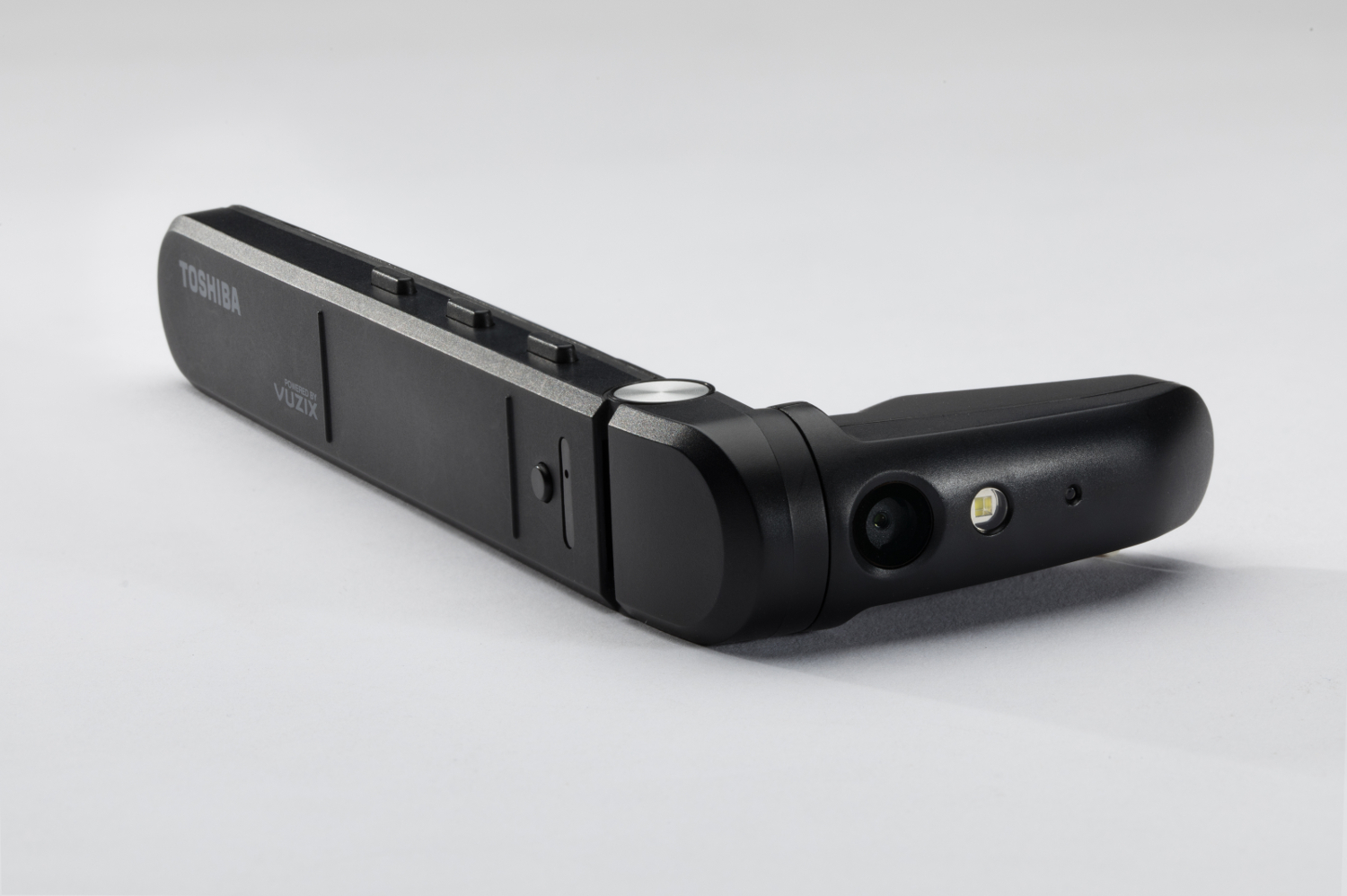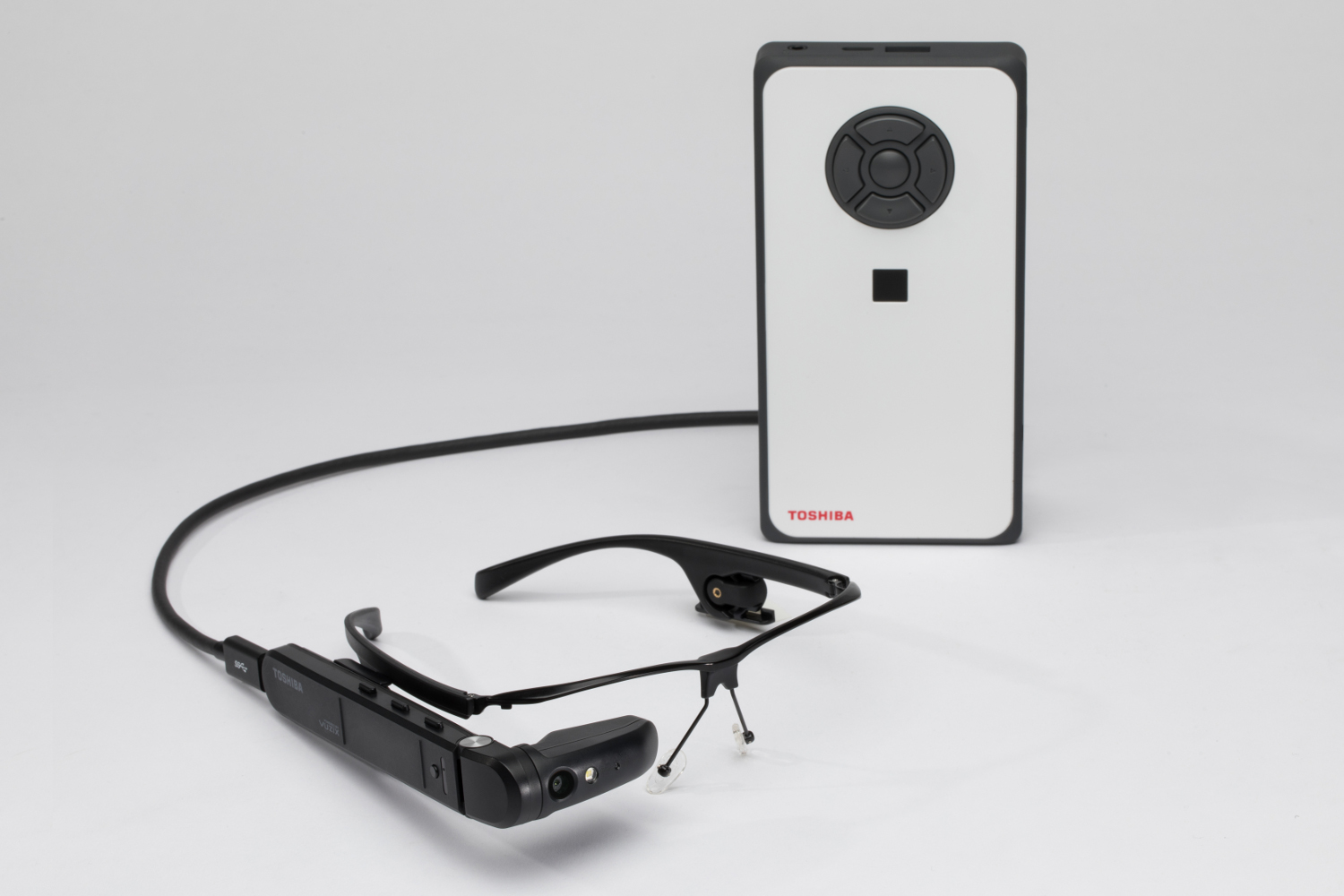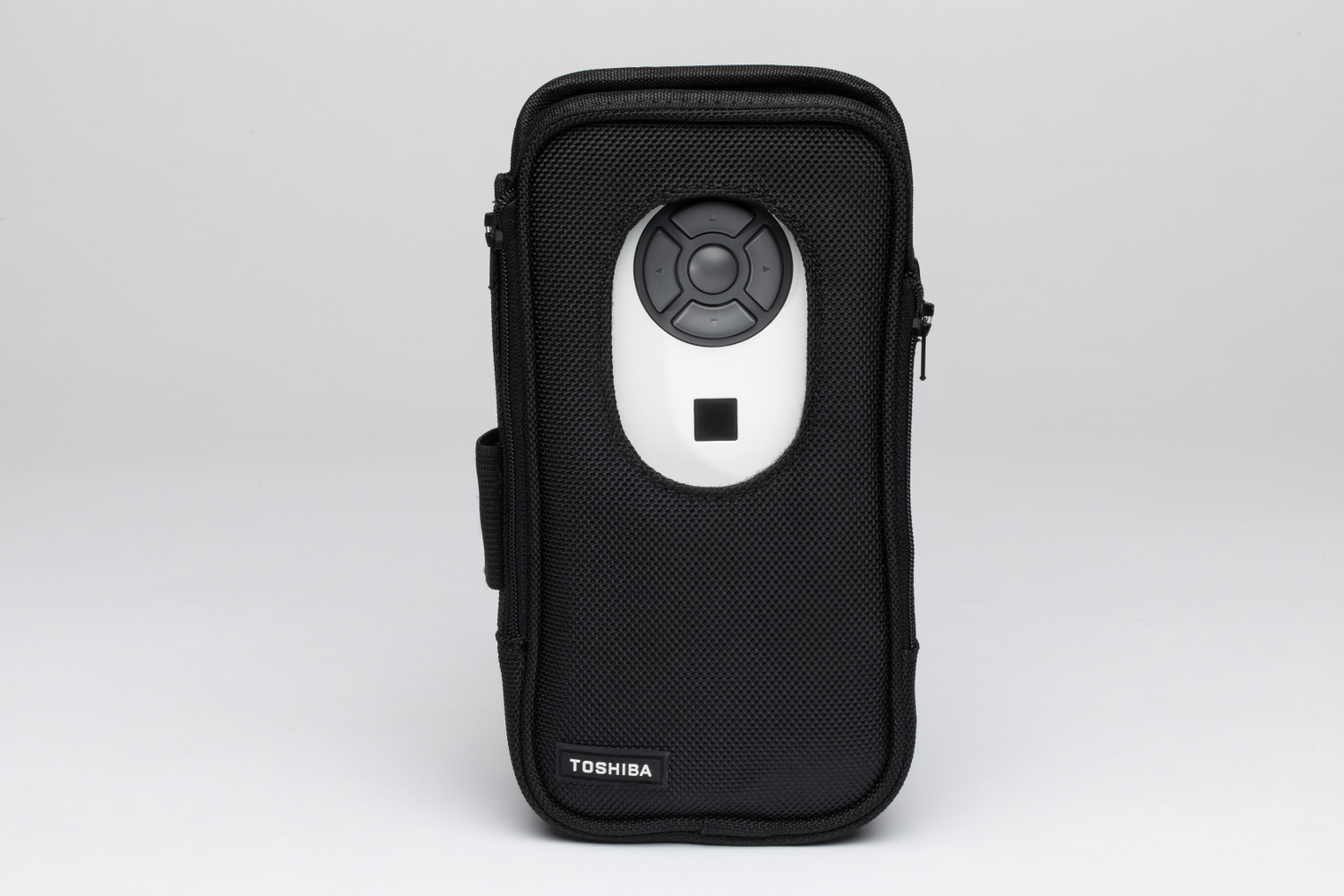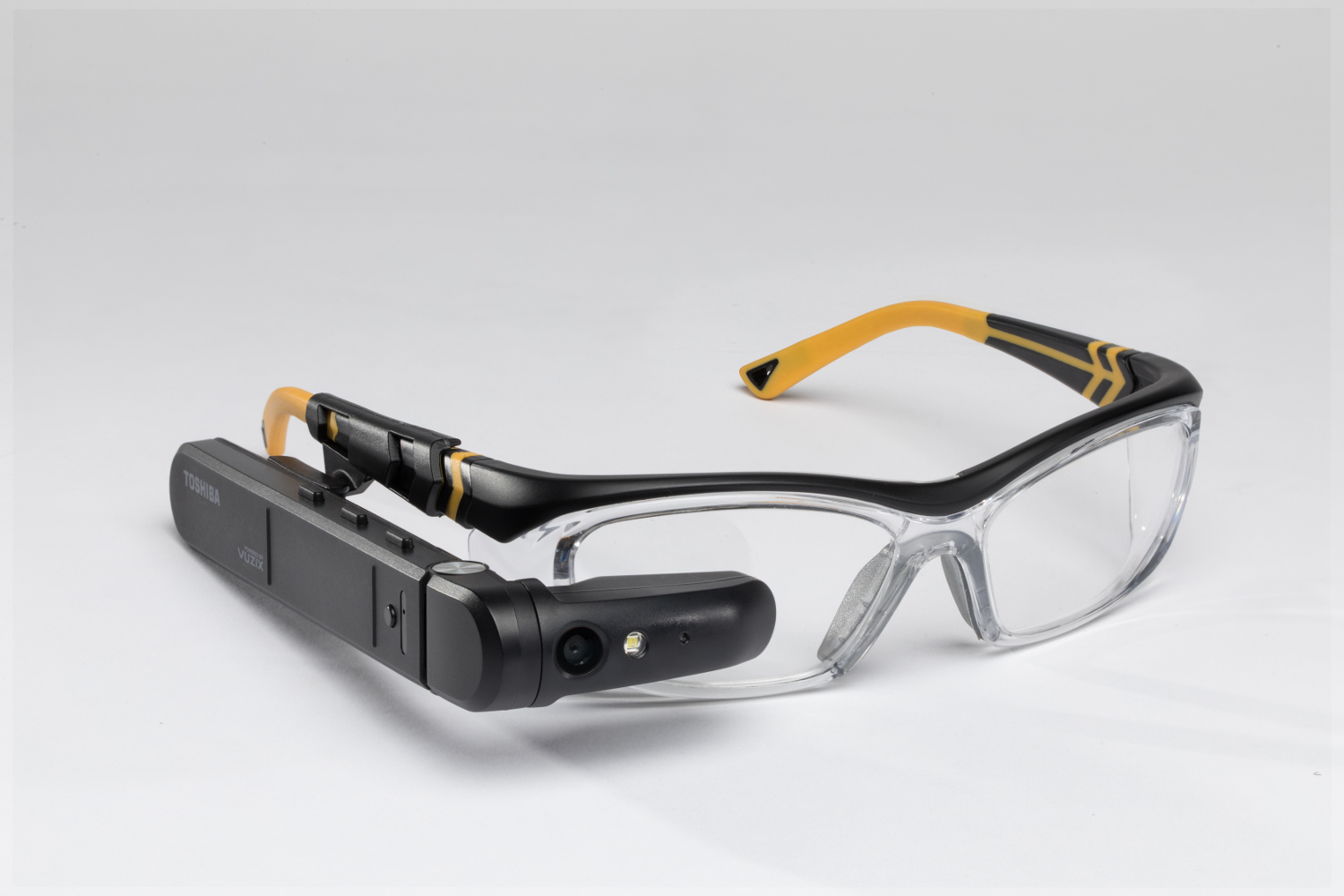A bright-yellow plastic hardhat sits on the conference table — not a standard sight at Digital Trends’ New York City office. The array of Toshiba executives around the table? Standard fare, but the product they’re here to show off isn’t. Called the dynaEdge AR Smart Glasses, it’s Toshiba’s first Windows-based smart glasses. And Mark Simons, President of Toshiba America, has high hopes for it, comparing it to “the laptop, which we invented back in 1985.”
A bold statement, but an interesting comparison. The dynaEdge isn’t the first augmented reality headset — we all remember Google Glass — but it is the first wearable Windows 10 PC to fit in a pair of glasses.
The first wearable Windows 10 PC to fit in a pair of glasses.
“For decades, Toshiba has been instrumental in streamlining the operations of businesses around the world through cutting-edge, mobile computing technologies,” said Carl Pinto, a vice president with Toshiba. “We believe that wearable PCs, combined with smart glasses, will take on-the-job productivity to a whole new dimension.”
The dynaEdge combines a head-mounted display screen with a wearable PC about the size of a transistor radio. Think of the PC instead as three Samsung Galaxy Note 8’s glued together. That box houses a full Windows 10 computer, including a 6th Gen Intel Core M processor, 16GB of RAM, a removable battery, solid state storage, a finger print reader, and so on. It connects to the wearable Toshiba AR100 Head Mounted Display, a 3-ounce device with a micro-screen like that found in Google Glass. Thanks to an ingenious clip, it can be worn on either the left or right side of eyeglasses, protective eyewear, or anything else you’d strap over your face.
Toshiba envisions the product in a wealth of applications, from field work, to assistive tech, to assembly lines, to warehousing – basically, anywhere someone needs a feed of information, and doesn’t want to schlep around a binder of notes and instructions. Because it’s a full Windows 10 PC, it can stream video with a few simple clicks.
“Rather than an engineer assessing whether a plane is airworthy by sending pictures, someone can be looking at a plane and engineers can assess it live,” Carl told Digital Trends. Imagine the utility of having schematics at your fingertips when working in a clean room, or under the hood of a car.
We tested out the dynaEdge briefly, and thought it felt extremely durable. The arm is segmented to allow for multiple adjustments and designed to stay put when positioned. The screen was easily legible, even in bright conditions, and we watched video with only the tiniest lag. A speaker and microphone allowed us to carry on conversations as readily as on a phone. The dynaEdge has swipe and tap functionality, but much of the navigation takes place on the belt-mounted PC. That component has navigation buttons, a power button, and more.
[…] wearable PCs, combined with smart glasses, will take on-the-job productivity to a new dimension.
Toshiba is hardly the first company to go after the wearable, headmounted display market. Besides Google (and the knockoffs from Chinese companies like AltoTech), which is pushing back into the Enterprise as of last fall, there’s Epson, which has been making Moverio augmented reality glasses for years. Its latest, the Moverio BT-300, isn’t something you’d wear around all day, but the design keeps improving and there’s clearly a market for it.
Why does Toshiba think it can succeed when other companies have stumbled? Simons can only smile. “We waited to launch, we talked to companies about exactly what they wanted,” he said. It seems clear that big business has already agreed about the utility of the product. Time will tell.
Toshiba expects to sell the dynaEdge in the last quarter of 2018.
Editors' Recommendations
- These 39-gram AR glasses have me excited for the future
- Xreal brings spatial computing to a pair of AR glasses
- This wild, screenless AR laptop gives you a 100-inch virtual display
- Apple may embrace the metaverse now after all
- This microLED advancement is exactly what AR and VR needs






